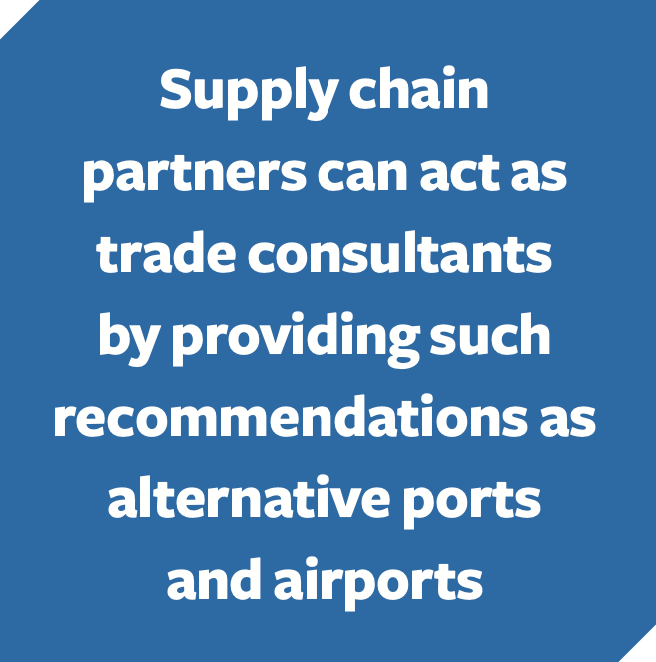Shipping Strategies in Unusual Times
The steps pharma manufacturers can take to mitigate transportation costs amid Covid’s supply-chain crunch
Pharmaceutical companies are facing higher transportation costs due to capacity constraints and the need for special handling. The higher costs are further complicated by a complex global supply chain that makes managing and tracking such costs difficult. However, there are ways to mitigate high transportation costs, such as understanding the role that packaging plays, transportation options and understanding the charges associated with each shipment.
The Covid-19 pandemic has placed unprecedented constraints on supply chains, driving up rates and surcharges, and often resulting in delays. While no industry is immune to these constraints, there are a few ways companies can potentially mitigate supply chain costs.

For example, collaboration with supply chain partners is essential, particularly in times of uncertainty. By maintaining regular communications, companies can stay abreast of market changes and respond quickly to sudden changes. In addition, supply chain partners can also act as trade consultants by providing such recommendations as alternative ports and airports based on capacity, pricing, and/or arrival/departure times.
Working closely together with supply chain partners in terms of transportation options is also essential. Depending on the situation, a single mode of transportation is fine, but sometimes a combination of air and ocean freight services or rail and truck services may be more cost-effective. Sometimes it may even come down to a truck carrier versus a parcel service provider. Thanks to the growth in e-commerce, the lines are blurring between less-than-truckload (LTL) trucking carriers and parcel service providers. LTL trucking carriers are moving an increasing amount of e-commerce goods, typically more oversized items such as furniture or exercise equipment and bulky items such as big bags of feed or pet food.
The pharma factor
Because special handling is needed for pharmaceuticals, understanding the capabilities of each transportation provider is critical. The capabilities to consider include the following:
- The types of vehicles: Whether or not they are climate/temperature-controlled and at what levels.
- Monitoring climate/temperature levels: How often are the levels monitored, can the levels be managed remotely and can the readings be shared with regulatory officials?
- Certifications/training: Are drivers and other handlers trained to handle pharmaceuticals? Is the company certified through an association such as the International Air Transport Association (IATA)?
Once one has an understanding of the capabilities, understanding the costs is another consideration. It’s not cheap, even in a “normal environment,” to transport pharmaceuticals. There is an agreed-upon rate, either via a contract or a spot rate. Contract rates are typically negotiated rates for a particular period.
These periods are usually two-to-three years and include such things as volume commitments; any penalties the shipping company may have to pay if volumes fall below or above a certain level; either particular trade lanes or a blanket agreement for a region or globally; and more.
If a shipping company decides not to utilize a contract, spot rates will usually be used. These rates fluctuate depending on market conditions. Spot rates will be high in times of tight capacity like we are currently seeing across supply chains.
For parcels, there are no spot rates. Instead, shippers will likely have to pay published rates available on UPS or FedEx’s websites unless the shipper can negotiate an agreeable rate.
In addition to rates, there are surcharges—fuel, additional handling, hazardous goods, signature, address correction and a host of other surcharges are added on top of the rate, depending on the situation. Monitoring climate/temperature levels may be priced separately as well.
Monitoring shipping invoices is very important. Compare the charges against the contract and if there are any discrepancies, let the carrier know as soon as possible. Many companies opt to have third-party businesses review invoices and work with carriers to obtain refunds. There are also a growing number of technology solutions that can do this as well.
A package deal
While mitigating costs begins with the actual costs, packaging also plays a role. Package dimension and weight is one of the main factors in determining shipping costs. To put it simply, the larger the package, the more one will have to pay for shipping it. The same goes for package weight—a heavier package will cost more to be delivered.
The package size should be big enough to hold the product but snug enough to keep dimensions to the minimum to avoid inflating shipping costs. In addition, a smaller packaging size is more likely to protect the product from unnecessary shaking and damage.
Packaging should also be designed such that the packing time for a given package is minimized. Employees can pack goods more quickly and efficiently, meaning less money spent on handling the product and its packaging.
More efficient packaging also improves the sustainability of one’s business and reduces carbon footprint.
However, suppose the product that is being shipped is temperature-sensitive. In that case, one needs to follow the general guidelines outlined earlier and ensure that the packaging meets the temperature range required for the item.
Also, determine whether or not dry ice will be needed. This could impact shipping expenses since dry ice is legally considered a hazardous material.
Temperature-sensitive packaging can be purchased by such providers as FedEx and UPS, as well as specialized businesses. Like everything else, though, compare the options with what is really needed. Using a neutral, third-party consulting service may be beneficial.
Because of the nature of pharmaceuticals, transportation costs are high. But, by choosing the proper mode(s) of transportation, manufacturers could help offset unnecessary higher costs. Optimizing packaging also plays a significant role in reducing shipping costs as well—choosing the right size, reducing filler and the proper temperature-sensitive packaging are among some considerations to make.
About the Author

John Haber is the Founder and CEO of Spend Management Experts.
